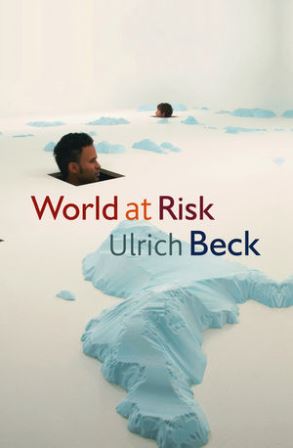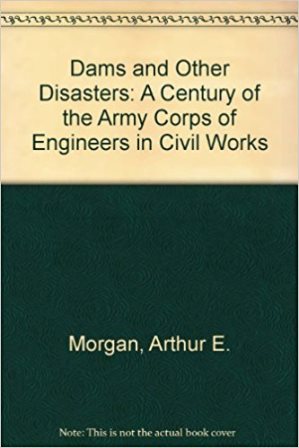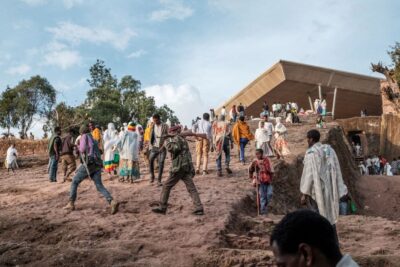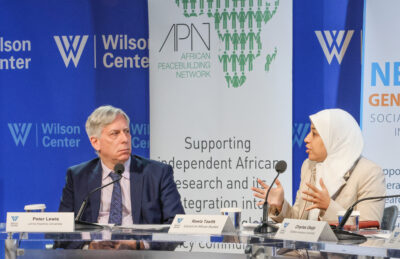There has never been a time when the possibilities for climate adaptation have been so prominent in public debate and yet so fleeting. This was made most apparent in recent global negotiations over the Paris Agreement. Outlining the potentially irreversible impacts of climate change, the agreement calls on countries to reduce greenhouse gas emissions and adapt their agriculture, health, and water sectors to climatic threats. Indeed, climate change is a global risk that has global consequences.1 New York: Polity Press, 2008More Info →
New York: Polity Press, 2008More Info →
Yet, focusing attention on the agreement itself overlooks the local and spatial dynamics that inform how people respond to and live with a changing climate. In Guyana, where I do research, climate adaptation is focused on floods caused by above average rainfall and high tides. Civil engineers are the main actors directing the adaptation of the country’s centuries-old dam, canal, and sea defense network after a disastrous flood ravaged its coast in 2005.
Through these interventions, they have recognized that climate-related flooding is shaped by public debates about expertise. As Mike Hulme argues, climate adaptation has a physical history and a social history that are interwoven.2Mike Hulme, “Geographical Work at the Boundaries of Climate Change,” Transactions: Of the Institute of British Geographers 33, no. 1 (2008): 5-11. These histories, he notes, are often interpreted very differently from the peripheries of space and power and call our attention to the forms of expertise people rely on to transform the places where they live into sites worthy of intervention. I suggest the expertise that climate adaptation requires is place-based and reminds us that climate change cannot be understood in isolation from how information about a place is produced and circulated.
Climate adaptation, in situ
“Histories of modernization…make evident that the reduction of greenhouse gas emissions is not the only concern that affects planning for climate adaptation.”While the Paris Agreement intimates that climate adaptation is a future-oriented project indebted to the climate sciences, expertise has a past. Histories of modernization, particularly in the global South, make evident that the reduction of greenhouse gas emissions is not the only concern that affects planning for climate adaptation. Take, for instance, the early and mid-twentieth-century push for multipurpose damming. Timothy Mitchell and Carl Kitchens have shown that hydraulic engineering and public health outreach for malaria prevention entangled knowledge and political practices.3Timothy Mitchell, Rule of Experts: Egypt, Techno-Politics, and Modernity (Berkeley, CA: University of California Press, 2002) and Carl Kitchens, “A Dam Problem: TVA’s Fight Against Malaria, 1930-1955,” The Journal of Economic History 73, no. 3 (2013): 694-724. The engineering of water and (non)human populations was intended to stabilize economic growth while imposing particular sensibilities about expertise. For instance, many early approaches to multipurpose damming depended on the top-down bureaucratic management of engineers, pedologists, and hydrologists, as opposed to involving farmer or community-based participation.4 Boston: Porter Sargent Publisher, 1971More Info →
Boston: Porter Sargent Publisher, 1971More Info →
By acknowledging these historical entanglements, my point is that climate-related disasters and the destruction that follows have encouraged people to pay attention to and reconsider the very forms of expertise that legitimize social orders of a given place. In many respects, climate adaptation is not altogether novel, but it offers an alternative way to think about place and the (in)human forces shaping it.
Along the Atlantic coast of Guyana, climate adaptation has been fraught. Below sea-level and subject to a biannual wet season, Guyana is a place long resistant to human efforts to hold back flood waters. Engineers since the Dutch and British colonial eras have designed elaborate canals, dams, and sea defenses in an effort to tie flood-control to the ebb and flow of agricultural markets. However, a disastrous flood put many of their assumptions about flood-control into question. Between December 2004 and January 2005, multiple storms resulted in over 60 inches of rain in Guyana’s capital city Georgetown and nearby rural communities. The storms were unprecedented when compared to engineers’ records that estimated nine inches as the average monthly rainfall. They attributed a number of the storms to climate change due to fluctuations in weather systems normally associated with the southern hemisphere.
Extensive flooding resulted in 34 deaths and left 62 percent of the national population (roughly 520,000 people) stranded in their homes and in contaminated water for weeks. Timing the release of water from the country’s 120-year-old earthen dam, called the East Demerara Water Conservancy (EDWC), was crucial. If water was released when the tide was high, Georgetown would have been inundated with water from the EDWC and also the sea. Likewise, not releasing water from the EDWC would have put an enormous strain on its embankment, which could have caused its collapse. Engineers devised a plan that allowed them to release water into a nearby river. While this strategy saved Georgetown from further flooding, it exacerbated flooding in rural communities.
“In collaboration with hydrologists and farmers, engineers have reflected on how the deep histories of peat soils have shaped the EDWC overtime.”Since the disaster, state-sponsored engineering agencies have received a windfall of support from the World Bank and United Nations Development Program for the climate adaptation of the EDWC. Engineers have implemented new modeling techniques to reinforce the EDWC’s embankment and built a storm relief channel for the EDWC. Engineers improved on their two-dimensional models of the EDWC’s drainage with a three-dimensional technique that intends to map not only its outflow but internal channels. They have also made investigations into how the likely consequences of 100-year storm events and high tides stress the EDWC’s drainage capacity. In collaboration with hydrologists and farmers, engineers have reflected on how the deep histories of peat soils have shaped the EDWC overtime.
The EDWC’s embankment is composed mostly of peat, a mixture of plant, seashell remains, and vegetation compressed since the Pliocene and the region’s last glacial period. Ex-slaves and indentured laborers, at the urging of colonial British engineers, first manipulated peat for the damming technology known as a gravitational scheme. And, by the mid-twentieth century, Guyanese engineers even proposed several more earthen dams to support flood-control and the expansion of small-scale agriculture in the name of postcolonial development. Engineers, in other words, once assumed that not only dams but harnessing peat was emblematic of social and technological progress.
In contemporary Guyana, engineers’ work is directly driven by their concerns about the EDWC’s structural vulnerability to climatic flooding, in part due to its peat-based embankment. What’s more, their expertise is constituted by their modeling efforts (and failures) as well as the physical changes in the EDWC’s soil formations. Climate adaptation, therefore, has been dependent on engineers effectively communicating the fallibility of their practices and design measures to the public.
Place-based expertise
“No one sees a viable alternative to damming in Guyana’s foreseeable future.”Such demands for transparency have been prompted by NGOs, including the Guyana Human Rights Association and the Guyana Citizens’ Initiative. They have staunchly criticized engineers for decades of inconsistent canal maintenance as well as for the eviction of people from their homes for the construction of the EDWC’s storm relief channel. Like the engineers, these groups have reflected on and proposed technical solutions for adapting the EDWC. Many of the groups’ members are engineers affiliated with local private firms, who have provided crash courses on damming and its perils to the general public. Nevertheless, no one sees a viable alternative to damming in Guyana’s foreseeable future.
The Guyana Human Rights Association worked with residents of Hope Village, who were evicted for the storm relief channel, to launch a letter writing campaign. Hope residents wrote to their local representatives about the possible ways in which the storm relief channel would compromise daily activities, such as farming and transportation. At the same time, they acknowledged the generous compensation packages that the state offered. They were willing to move as long as engineers first provided more information about the storm relief channel’s design. They intimated that, while the EDWC needed a storm relief channel, they were concerned engineers were rushing the construction and did not have sound materials for building with peat.
At the core of their grievances was the belief that the state violated Article 16 of the constitution, which states citizens that have a right to timely consultation from the state prior to the execution of a development scheme. The Hope residents, in other words, called for climate adaptation projects to be not only technically sound but also transparent. The state responded to their letters by holding town-hall forums to gather feedback from Hope residents and to discuss how engineers were improving design measures on peat soils. But many Hope residents still had reservations. The state moved forward with the construction anyway and completed it in 2015. Since then, the country’s coastal region has experienced intense flooding, but the storm relief channel has not yet experienced structural failures. So, while the EDWC’s system has been modified, Hope residents stay in constant communication with engineers about changes to drainage in the area.
“Dialogue between engineers and the public is not only important in times of disaster but for implementing everyday strategies for living with a changing climate.”For Hope residents, climate adaptation has become increasingly about the expansive ways in which they imagine place despite ongoing struggles over welfare, capital, and security.5For a broader discussion about climate change debates within and across global South public spheres see Dipesh Chakrabarty, “The Politics of Climate Change Is More Than the Politics of Capitalism,” Theory, Culture, and Society 34, no. 2-3 (2017): 25–37. Those skeptical of the Hope Canal and those whose agricultural livelihoods have been impacted by climate-related flooding have or are considering migrating to other parts of the Caribbean and North America. In this way, climate adaptation projects are motivation for political action: their possibilities are structured by the ways in which people define (and privilege) some engineering practices over others. In the Hope Canal case, engineers’ decision to build with geosynthetics fabrics instead of (greenheart) lumber—a material traditionally used for peat canal/dam foundations in Guyana—was an important point of contention in the Hope residents’ letter writing campaign. Hence, dialogue between engineers and the public is not only important in times of disaster but for implementing everyday strategies for living with a changing climate.
Conclusion
My discussion about Guyana’s particular struggles with peat and damming are not intended to offer an appraisal of climate adaptation projects as doomsday or politically overdetermined scenarios. In global South contexts like Guyana, where climate adaptation is tenuously anchored to the agendas of development institutions, there are intense debates over what counts as adaptation. What’s more, the (expensive) financing of infrastructures related to dams—such as seawalls and sluices—has made it even more vital that engineers remain attentive to what peat can and cannot do for them. This means that public debates about climate adaptation are tied to how they identify certain systems of knowledge, technology, and nature as characteristic of a place.
Indeed, there are places on the planet other than Guyana’s Atlantic coast where climate adaptation projects have confronted the limits of modernization. The adaptation of the levee system with the conservation of mud flats in post-Katrina Louisiana and the recent turn to sand dunes (as opposed to solely seawalls) in the Netherlands for flood-control are just two examples.6For a discussion about the role “design” discourses play in climate adaptation see Stephen J. Collier, Savannah Cox, and Kevin Grove, “Rebuilding by Design in Post Sandy New York,” Limn 7 (2016). While these projects are rooted in diverse political and socio-environmental contexts, they all signal a similar problem. The status quo of global climate accords that narrowly focus on managing potential climatic threats is not enough. A radical reappraisal of how people across the planet define expertise and progress should be first on the agenda.
Banner photo credit: John and Elaine Chesterton/Flickr













